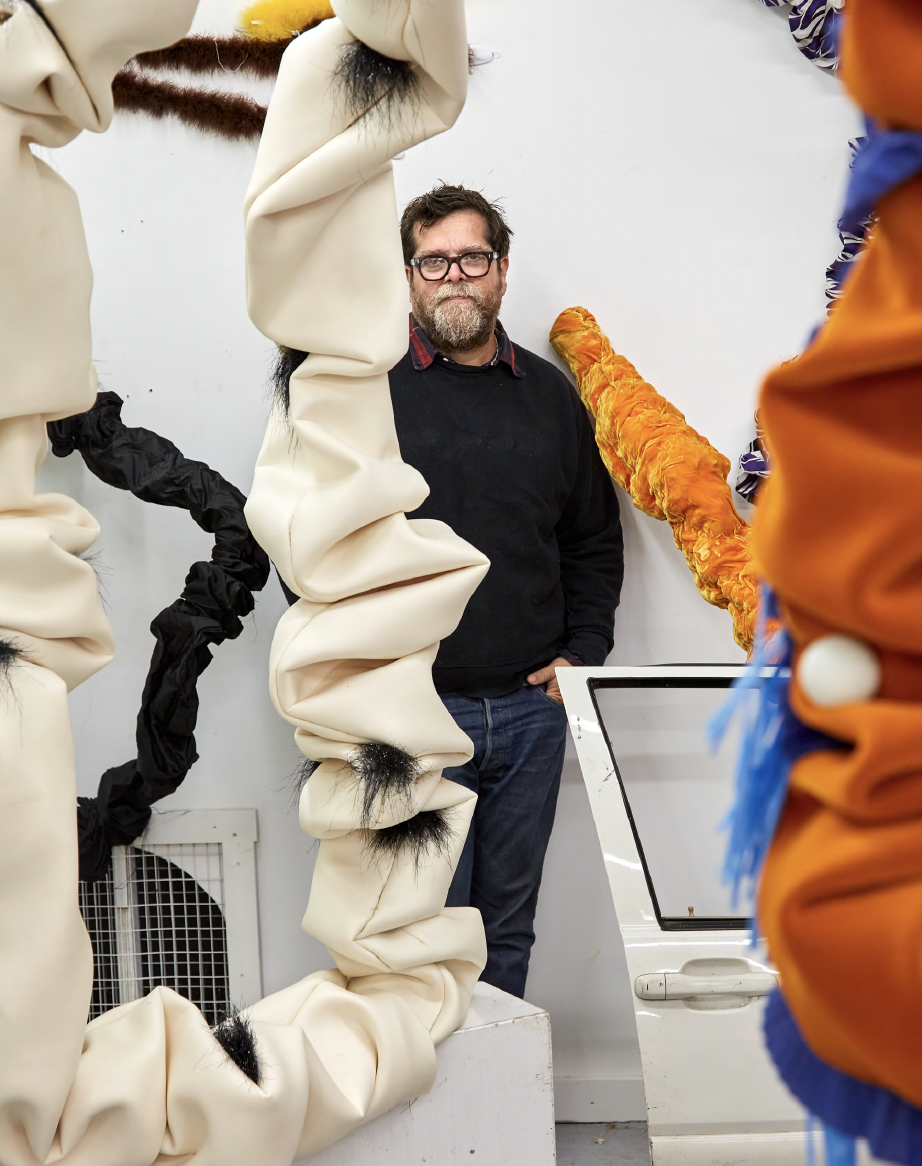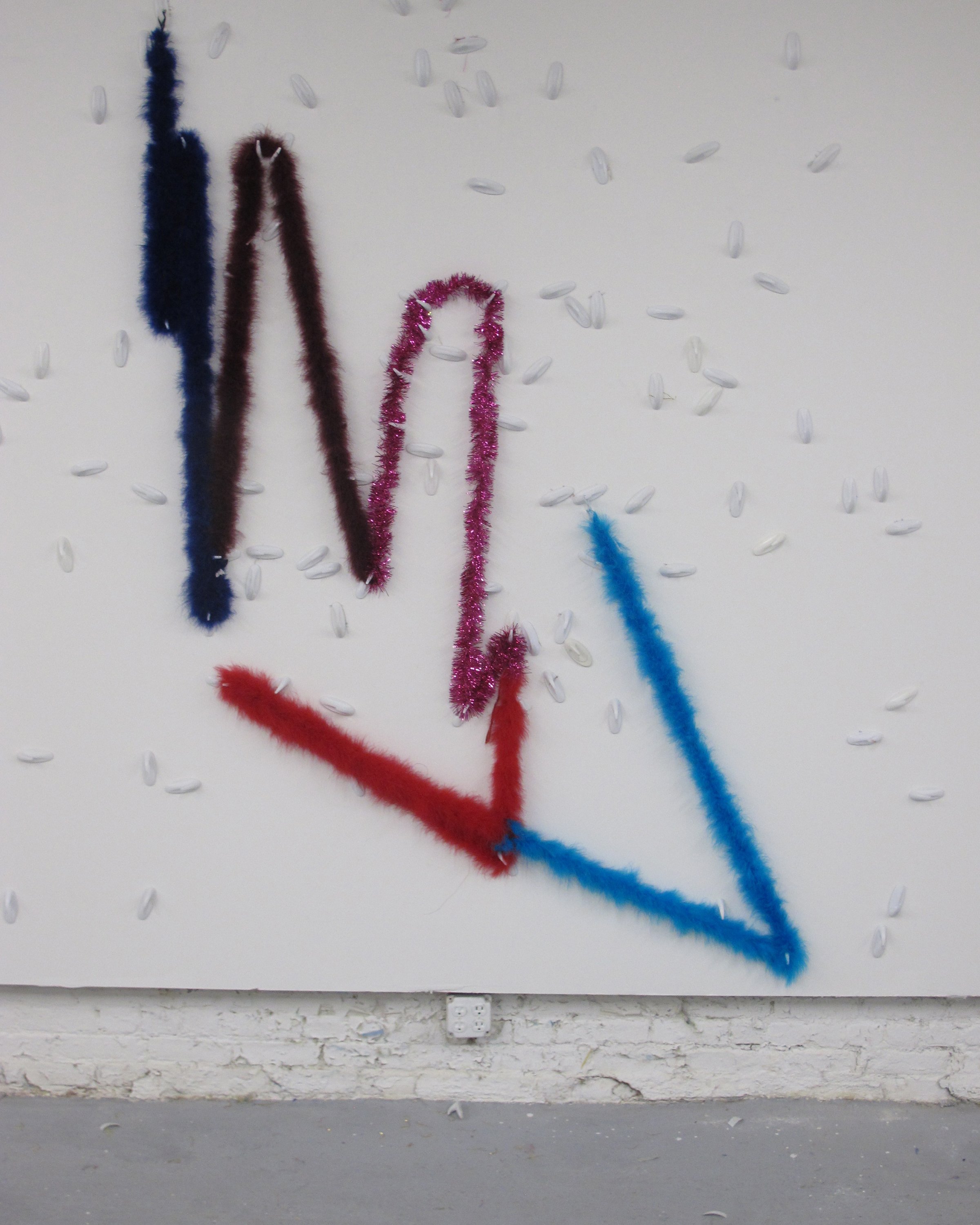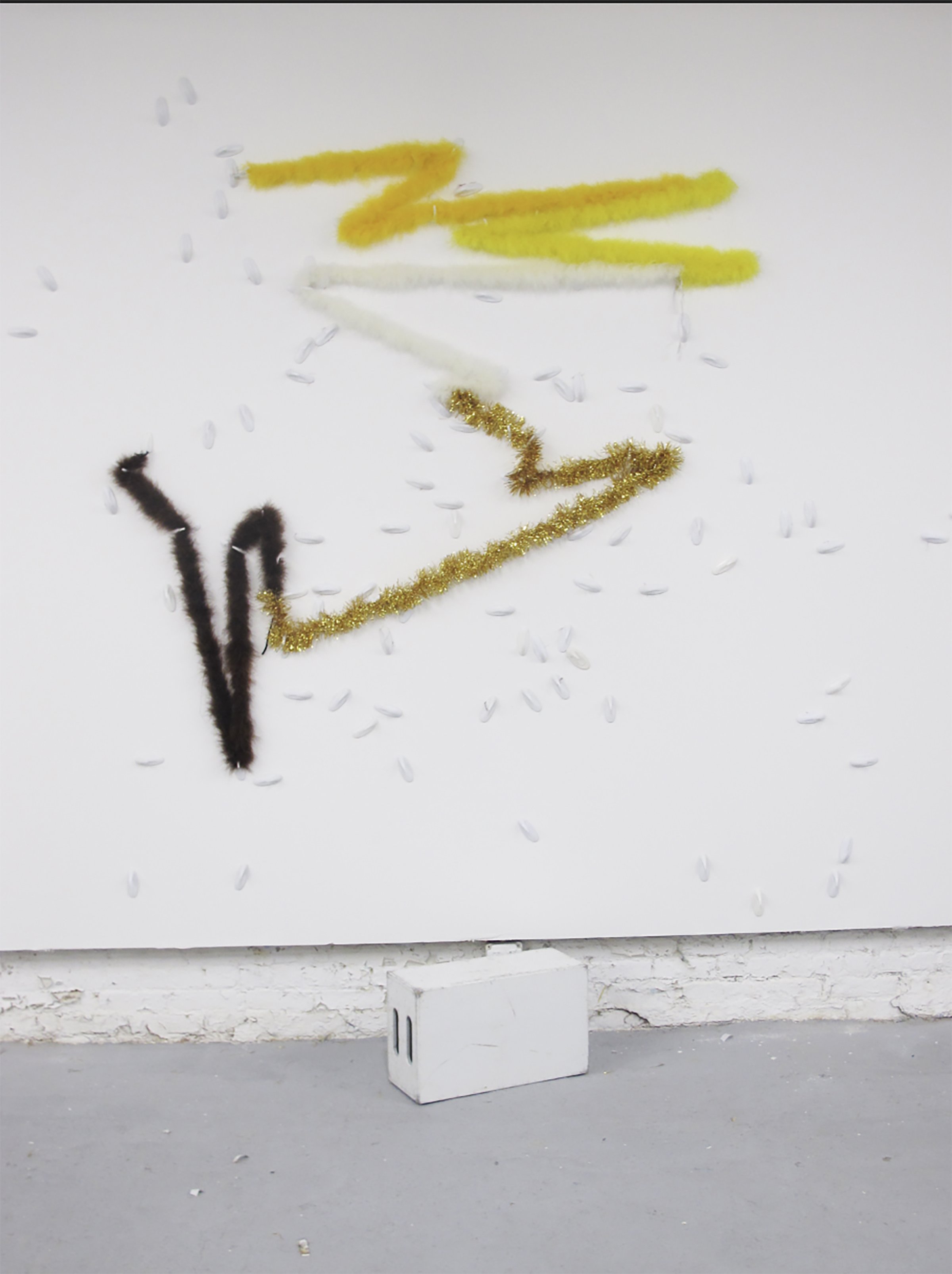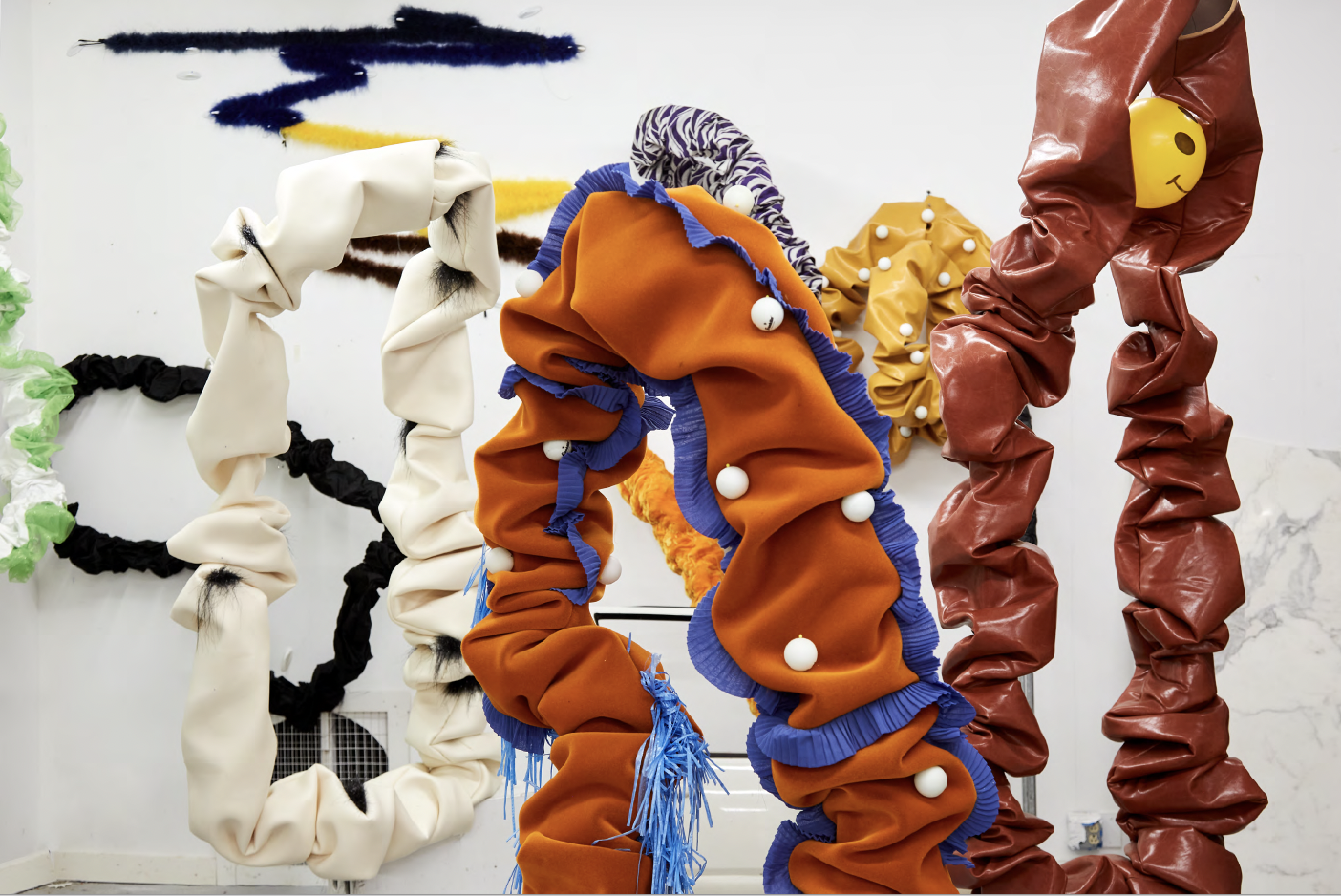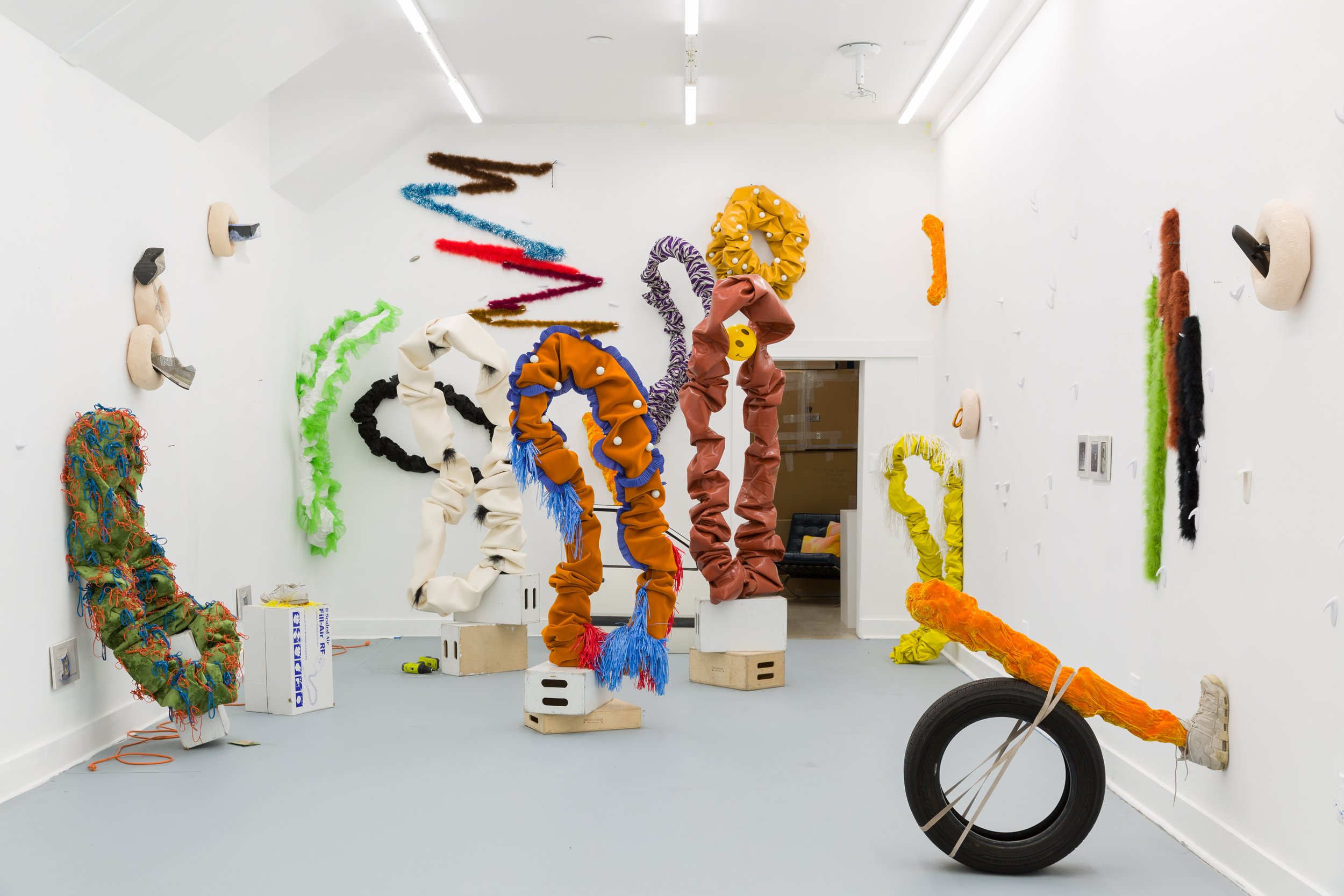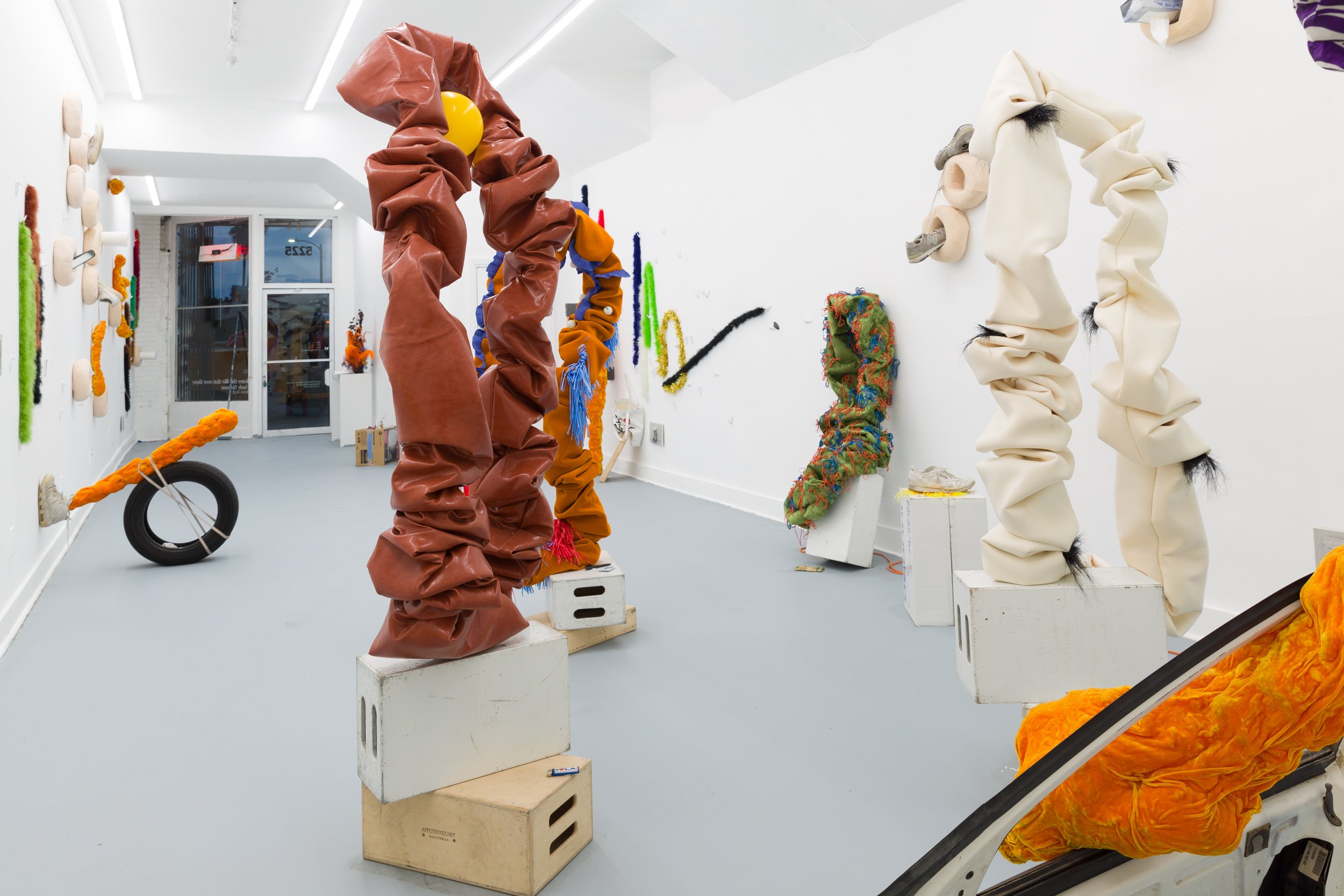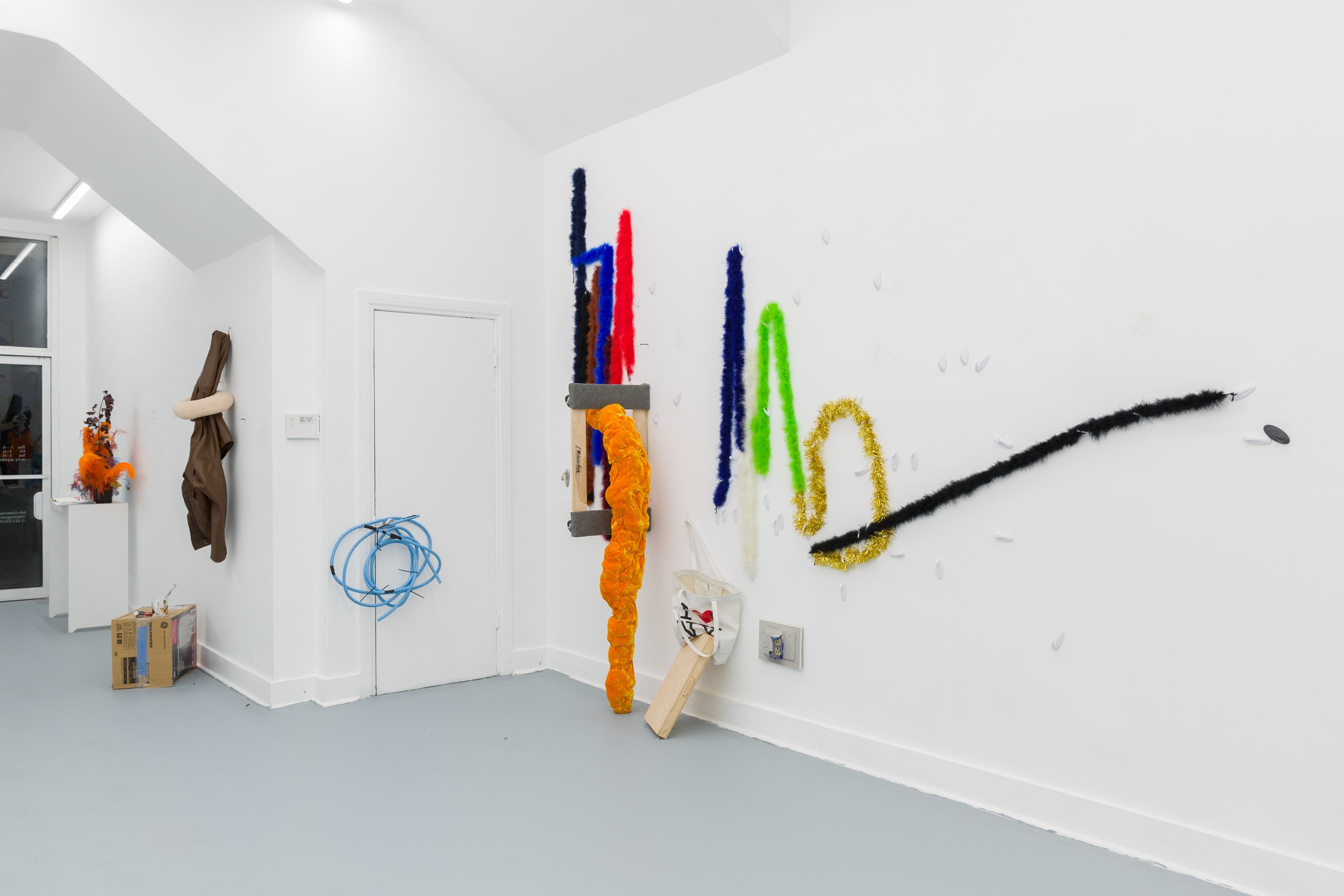10.14 — 12.03.2022
leave this like that over there
Andy Harman
Welcome to Leave This Like That Over There at Lauren Powell Projects where, between October 14 and November 25, lives a re-staging—a replica; a re-thinking, if you will—of Andy Harman’s Brooklyn studio. Coasts apart, the artist’s workspace and the gallery share similarity in scale, the former, here, penetrating the latter with Harman’s sculptures in ecstatic colors, inviting tactilities, and malleable forms. “There is always an element in a studio that describes the author, may be a myth that adds a layer about identity which definitely has to do with a queer artist,” Harman says.
The sculptures’ recognizability is gloriously mundane, tangled with our fleeting moments of use, function, and discard. Bulging scrunchies, pillowy cereals, puffy Cheetos sticks, serpentine feather boas—stuff overlooked but engraved to our day-to-day ventures catch us in the show enlarged. “They are scaled to my head and body—just right for me and not overwhelming,” adds Harman about the works’ amicably blown-up hefts. Stripped from our bedrooms, kitchens and bodies, they now occupy the white cube’s blank walls as they backdrop the artist’s concert of color and texture. “Objects below the radar, right under our nose but not consistently seen,” according to the artist are what he is most attracted to, “because, formally, they live on the fringes.”
Larger-than-life, the sculptures occupy their environment like bits of recollection that scratch backs of our minds; their liquid codings in memories are swapped with urges of touch, soft or hard. The airy crunch of a Cheetos bite has changed skin to crushed velvet’s fuzzy warmth; the snack’s notoriously contagious neon orange hue still endures across the sculpture’s rocky surface, all while light washes the tufted fabric with wavy brightness. “I have a guttural response to fabrics,” Harman admits. “Fabric have depths of color and optic quality that painting something doesn’t always have.”
Harman’s 22-year experience in set design signals hints of a desire to wed well-dosed proportions with courageous colors and concoct narratives with tamed multiplicity. He translates his past with props and mise-en-scènes into still lives, staged in fleshy three dimension, narrated with shape-shifting scripts.
Zigzagged, erected or punctured, the sculptures inhabit the rupture between motion and stillness, on a verge of growth and movement; they are indecisive about settling or departure—static as we meander the gallery, they dare us to look again to glimpse at their potential escape. Their ambiguous scenarios—perhaps consumerist fantasies, anonymous hook-ups, excessive promises—are accentuated by objects: walked shoes, tired tires, worn coats. Each gloriously imperfect circularity offers an orifice—the coat thrusts Loop Hold (2022), a scaled up high density foam rendition of a cereal ring; in Wedgie (2022), a grand velvet stick of a Cheeto pokes through a car door window.
Narratives left blurred, Harman juxtaposes the sculptures he conceives at his studio with his personal objects or those he collects off the streets; humor courts materiality and surfaces flirts with usedness. “There is a certain way things are thrown together out there which is sometimes poetic and beautiful, and they say something about the culture and the time,” Harman says about stomping New York for findings. “The entropy of the city and the ways stuff people throw away pile into colors, shapes, and textures wildly inspire me.”
Boing (2022) sits on a concrete block, its reptile-like green velvet skin dressed with blue and red rubber bands. Elastic circles with bendable spines echo the giant scrunchies’ ruffled loop; the normalcy of the hair accessory is veiled by a bombastic scale and occupation of countless bouncy rings.
Circles are familiar holes, negative spaces to poke through a velvet lushness or foam rigidity—they let the air breeze out and what awaits behind be visible. Kickstand (2022)’s kinetic energy faces a wall: a Cheetos rod, wrapped to a car tire, sprouts from a sneaker, balanced by the wall’s permanence against the shoe’s desire to step and the tire’s urge to roll.
In a few wall drawings made with feather boas, formalist sharpness of the zigzag recalls electrocardiograms or children’s scribbles, generously stretched on the white surface with 3M command hooks. The boa’s flamboyant energy and the hooks’ productive raison d'être crafts a dependency, functional but also sensual, even sexual. Harman’s arrangements are queer for their refusal to settle for a material-centered value chart, as well as their embrace of self- and object-loving obsessions, a compulsion for objects of certain rhapsodic mystery between banal and beloved.
Osman Can Yerebakan
Andy Harman (b. 1968, Troy Ohio) lives and works in New York City. He received his MFA in sculpture from Yale University and a BFA from Kent State University. His work addresses our relationship with objects, more specifically the banal objects that occupy our space in everyday life. Harman removes objects from their original context, detaching them from their interrelational characteristics. Removing their veneer allows him to digest their associations in order to gain a deeper understanding of our relationship to our surroundings, and to address broader notions of consumption and consumerism. Harman reassembles these objects, interjecting an element of satire and personal history.
